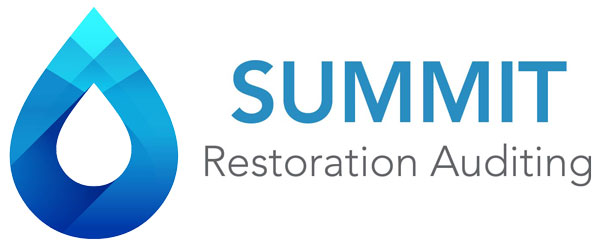Insurance Carriers Are Losing Millions to Overcharges on Claims
Billing practices vary a great deal across the water loss mitigation industry. Overpayment based on inaccurate invoicing can result in millions of dollars in wasted money per year for an insurance carrier.
85-90% of invoices reviewed by our Summit team have one or more inaccuracies. One carrier saved nearly $2m in two years.
The IICRC is a very complex set of standards that no adjustor is fully trained to interpret. Figuring out how to appropriately dispute a problematic invoice takes a lot of time. Some inflated charges are obvious. Others are hard to spot. The only way to know if invoices are accurate is to put them through a review process.
Adjustors Benefit from Expert Support in Several Ways
Adjustors save at least an hour per claim when they don’t have to do invoice review. The more complicated the claim, the more time they save. Having a trusted partner to handle the research and review process reduces frustration and confusion day-to-day.
Adjustors feel well-prepared when they talk to contractors about adjusting an invoice, because it’s been reviewed by an expert in IICRC and real-life water damage mitigation. They can refer to objective audit findings in conversations with contractors.
Adjustors learn new things from every audit package they receive and can apply this knowledge to future invoices. Adjustors report being able so spot variances more easily and feeling more confident in selecting which invoices need additional review. Invoice Renegotiation Doesn’t Have to Be Confrontational
Mitigation companies rarely push back on audit findings. No vendor likes to have their invoice short-paid. But if the reasoning behind the adjustment is valid and thoroughly explained, it’s hard to argue. Every audit review from Summit is written in neutral, objective language that keeps the conversation polite and professional. Nine times out of ten, adjustors report that contractors accept these findings. Occasionally, the contractor is able to provide additional information that clarifies and better supports the charges on their invoice. Summit is always open to making updates and corrections.
The More Invoices You Audit, the Higher the Potential Savings
It makes sense to start with the high dollar claims since these yield the highest dollar savings. But over time, this threshold should be lowered. For example, a carrier might start with $10k claims, then $5k, then $3k. Individual adjustors also have the leeway to send us smaller claims if something seems problematic. Since our process doesn’t slow down claims completion and is affordably priced based on the dollar amount of each claim, it can make sense to incorporate Summit’s review process across the board. This way, all potential inaccuracies are identified and all vendors are treated in the same way with no company being singled out. Fairness and Accuracy Are Built into Our Process
The goal is for insurance carriers to pay what they really owe. We review all invoices with an objective eye, looking for accuracy and not ways to underpay vendors. Typically, we find that 10-15% of invoices are fully correct and require no adjustment. We take into account that there is sometimes more than one right way to handle a restoration job. Since we have owned a mitigation company, we know how to treat contractors with fairness — the way we would want to be treated in their position. Our pricing is a flat fee based on the size of the claim, NOT based on the amount we cut from an invoice.
